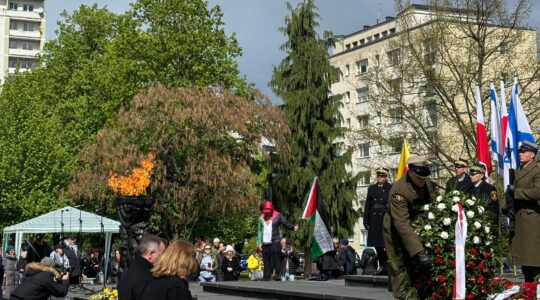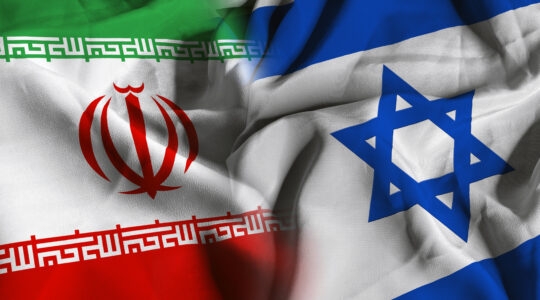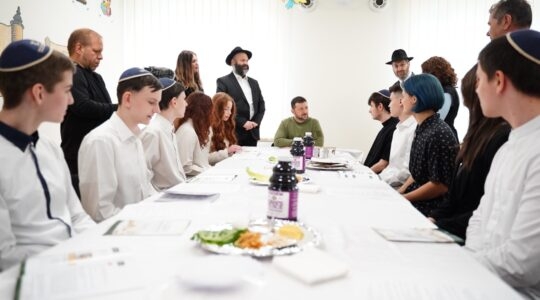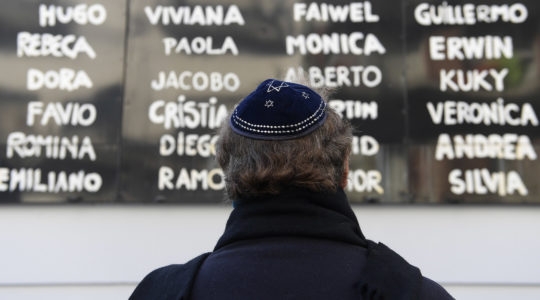MORRUZZE, Italy (JTA) – I spend a good chunk of my time in an old stone farmhouse in central Italy’s Umbria region. It’s a beautiful part of the country, but a region where few Jews have lived since the Middle Ages.
Indeed, around here, the generic word for”person” is “cristiano,” Christian.
Many Americans and other foreigners have weekend or summer houses in the area, and while I don’t think I know any Italian Jew living within 40 miles of my house, quite a large percentage of my “foreigner” neighbors are Jewish, or at least have Jewish connections.
If I’m here at Passover, I make a seder. Passover ingredients can be hard to find – the nearest place to buy matzah is at least an hour’s drive away. But I love preparing the traditional dishes and going though the Haggadah with whomever I can round up to join me at the table.
This means roping in whichever of my Jewish, or Jewishly connected, foreign neighbors are in residence. Friends from Rome or Florence and visitors from abroad also sometimes swell the crowd.
Over the years my seder guests have numbered from three to nearly 20. (I’m not a stickler for ritual, and sometimes I shift the timing of the meal to an afternoon or even a weekend to enable as many as possible to attend.)
We can form a rather motley crew – Americans, English, Dutch, Italians, Poles … artists, journalists, diplomats, lawyers, teachers, a best-selling novelist, a Pulitzer Prize-winning poet, a backpacking cousin touring the world before going off to teach English in China.
Inevitably, given the number of non-Jewish spouses and other friends who turn up, the Jews at the table often are outnumbered.
That’s just fine with me. At the seder we are enjoined to ask and to answer questions, to explain the Passover story in the simplest and most basic terms so that everyone – even those who don’t know what they should be asking – can understand.
I pass the Haggadahs around the table. They, too, are a motley collection: decades-old supermarket giveaways that speak to me of my childhood; an earnestly egalitarian feminist interpretation; an ArtScroll edition full of detailed explanation; a beautifully illustrated Italian version. Where some of them came from I don’t even know.
As in my childhood, we go around the table reading in turn, each guest taking a passage, then in unison we recite blessings or drip symbolic blood from our goblets. All the translations into English are different. Some guests read in Italian. Occasionally someone prefers to read in Hebrew.
It’s a cacophony, not a chorus. We laugh and talk – then we eat.
Throughout the meal, I keep at my side the most beautiful Haggadah of all – a facsimile edition of the Sarajevo Haggadah, the lavishly illustrated manuscript that was hand-written in Spain in the 14th century and brought by a circuitous route to Bosnia after the expulsion of the Jews in 1492.
The facsimile preserves the wine stains and children’s scrawls that mark the pages of the
original, indelible testimony of long-gone seders who knows where, who knows when, who knows who.
I point them out to my guests. We, too, even in our own informal way, I tell them, are connected, asking and answering questions, carrying on a tradition that spans time, place, community and culture.





